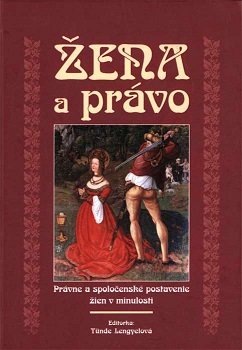Kongregácia regulovaných kanonistiek sv. Augustína rehole Notre Dame v Bratislave v 18. storočí
Congregation of Regulated St. Augustine nuns of the Notre Dame Order and their Convent in Bratislava in the 18th Century
Author(s): Miroslav Kamenický
Subject(s): Christian Theology and Religion, Gender Studies, History of Church(es), Modern Age, 18th Century
Published by: Historický ústav SAV
Keywords: Slovakia; Bratislava; modern age; 18th century; St. Augustine; nuns; Notre Dame Order;religious orders and congregations;
Summary/Abstract: The sixteenth century, Reformation and Re-Catholization represented a great challenge for nuns and monks in convents and monasteries. A new type of religious order - the Society of Jesus was founded in 1534. Its members - Jesuits focused mainly on educational work. They founded schools for boys on the all levels. Following example of Jesuits, women's orders started to mushroom. In 1535, it was St. Ursula Order and in the end of the 16th century, it was the Order of Notre Dame. Their main activities were care and education of girls. In 1628, the Order of Notre Dame was transformed into Congregation of St. Augustine nuns of the Order of Notre Dame. The order originated in Lorraine region and spread to France and Germany. Notre Dame nuns appeared in Bratislava, the capital of Hungarian kingdom then, for the first time in 1747. They came from Bavaria, from a convent near Regensburg. In Bratislava, they gradually built a spacious convent, convent school for girls and a boarding school. They focused on education of girls from middle and upper classes. The Convent enjoyed the patronage of the empress Maria Theresa, who took personal interest and visited it several times. The author deals in detail with some aspects of the daily routine of young girls educated in the convent. Food and medical were on a good level. Religion, French and German languages, geography, history, accounting and needlework was free of charge. Hungarian and Italian languages and drawing, dance and music lessons were paid and optional.
Book: Žena a právo. Právne a spoločenské postavenie žien v minulosti
- Page Range: 256-266
- Page Count: 11
- Publication Year: 2004
- Language: Slovak
- Content File-PDF

